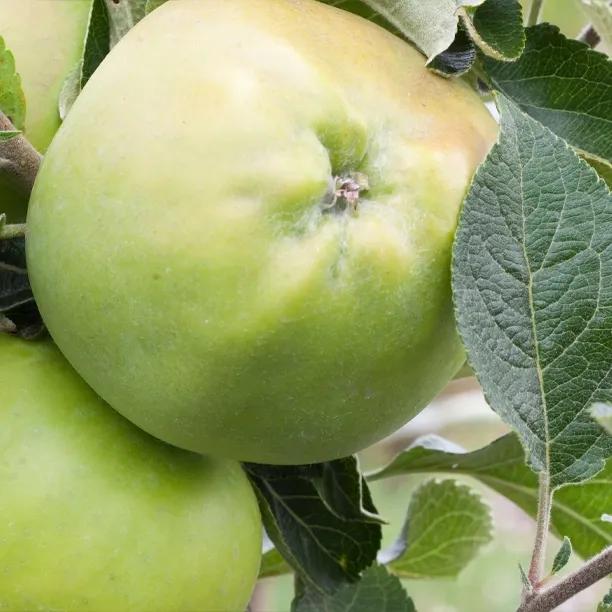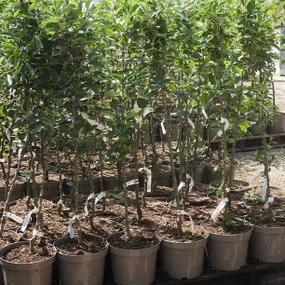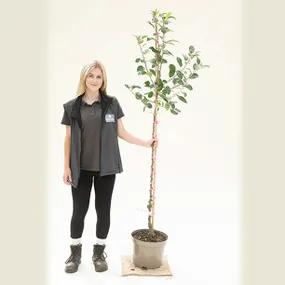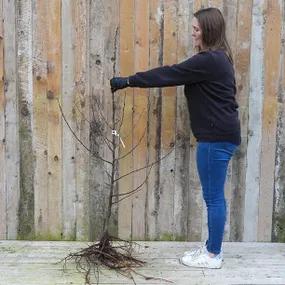Keswick Codlin Apple Trees
Honest Delivery Prices- Eating & cooking.
- Sharp flavour, good with cheese
- Spur bearer
- Not self fertile.
- Pollinator
- Pollination Group B.
- Harvesting: August/September
- RHS Plants for Pollinators
Recommended extras
Description
Malus Keswick Codlin - Early Season
Pronounced Keswick Codling in some parts, this is a nice dual purpose apple with a long, rather squashed shape and pale green-yellow colour.
When the fruit are well ripe, they are good to eat fresh: soft and juicy with an excellent sharp flavour - great with cheese or diced in a salad.
When cooked, it bakes into a nice soft purée.
The tree has plentiful, very fragrant flowers and is a great pollinator. It's quite fast growing and becomes a heavy cropper with time.
Browse our range of apple trees or the full variety of fruit trees.
Features:
- Excellent cooking apple, also good for eating when well ripe.
- Heavy cropper, some biennial habit.
- Good for making apple jelly or crumble.
- Partially Self-fertile.
- Spur Bearer: suitable for cordons & training on wires.
- Suitable for sheltered areas in the North and Scotland.
- Harvest: Mid August through September.
- Store & ripen in a cool, dry place: Doesn't store well.
- RHS Plants for Pollinators
Growing Keswick Codlin
Rich soil is important - dig in plenty of good manure and compost before planting. Soil drainage must be good. The more sun your trees get the better your crops will be.
Keswick Codlin Disease resistance notes:
These trees are very resistant to scab, a common problem in damper, humid, western areas of the UK.
Pollination Partners for Keswick Codlin:
These trees are partially self fertile, so will always produce some fruit & are likely to crop well with only poor pollination.
Your trees are in Group B with a flower date of 5.
This means that they will cross-pollinate with:
- All trees in Group B.
- Trees in Group A with a flower date of 2,3 or 4.
- Trees in Group C with a flower date of 8.
See our Guide to Apple Tree Pollination for more tips about pollination (it's really simple, we promise!) & a full list of partners.
Planting Instructions
Did You Know?
Said to be found growing in a rubbish heap, Mr John Sander of Keswick in the Lake district, bagged it and put it on the market in1793.
Very common in Queen Victoria's day, this was one of so many apple trees that almost disappeared around WW2.
It is one of the parents of Early Victoria.
Codling / Codlin is a old English name for green cooking apples.






 Img 4.webp)
 Img 3.webp)
 Img 2.webp)
